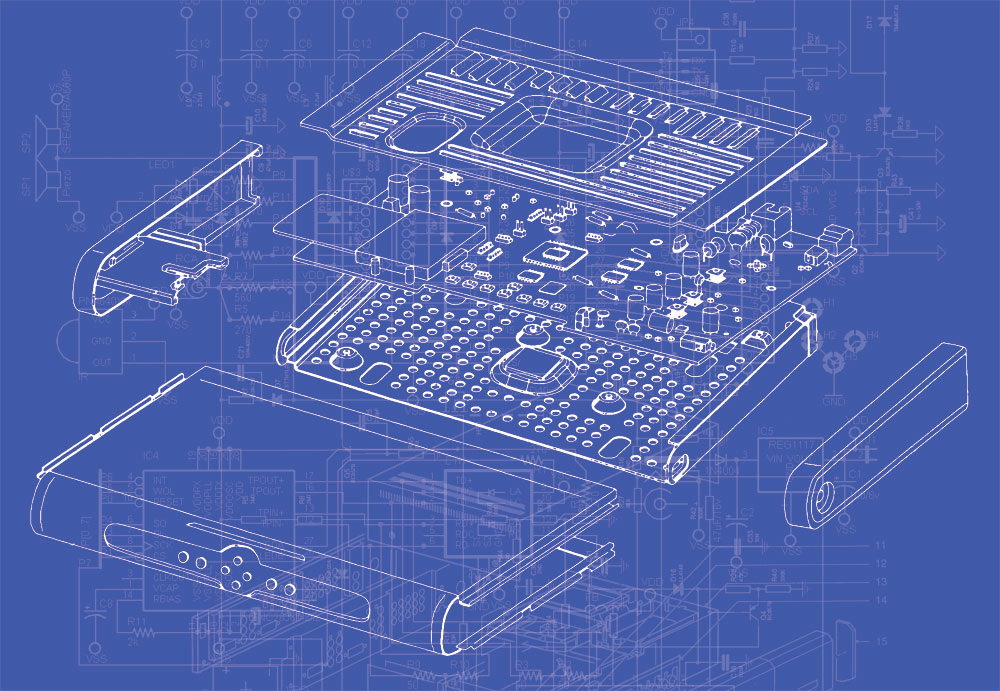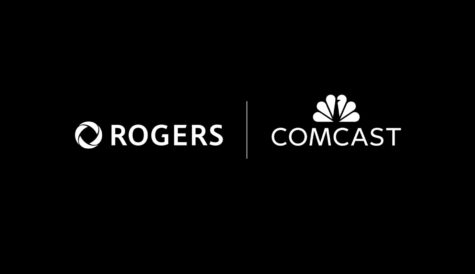Opening the box – the move to whole-home media access
 Operators are evolving their offer from discrete set-top boxes and DVRs to a whole-home multi-room experience, and will be doing so with home media gateways and complementary cloud services for some time to come, writes Adrian Pennington.
Operators are evolving their offer from discrete set-top boxes and DVRs to a whole-home multi-room experience, and will be doing so with home media gateways and complementary cloud services for some time to come, writes Adrian Pennington.
The days when pay TV was delivered to a single box have long gone, replaced by an overriding desire to enable whole home access to everything the customer owns and subscribes to on any screen.
Speaking at the end of last year, Gerry O’Sullivan, senior vice-president, global TV and entertainment at Deutsche Telecom said: “If you are a pay TV operator and not providing your service on tablets and phones, you will soon find yourself out of the game. People expect it.”
For subscribers, managing more than one DVR is a hassle and there are frustrations like not being able to record a certain programme on one DVR and watch on another. Mobile devices, especially tablets, are meanwhile becoming ubiquitous. “Operators need to evolve their offer from discrete set-top boxes and DVRs to a true whole-home multi-room experience, including seamless integration of both live and on-demand TV services to a variety of devices such as smart phones, tablets, games consoles,” says Paul Bristow, vice-president, strategy, middleware and consumer experience, ADB. “End-users want to access content on all these devices, and if we don’t meet that demand, we leave the way open for competing services to enter the home.”
“There is inherent cost with the need to upgrade to a full network experience versus having a US$200 box in the house complemented with tiny IP companion devices.” Joshua Danovitz, TiVo
Hardware in the home
In some quarters the last rites have been given for the set-top box but new market developments have given set-top vendors and many operators cause to give in-premises hardware a last major revamp. These developments include: a drive to reduce the number of consumer premise equipment (CPE) being managed by the service provider and the reduction of CPE costs through sharing of resources such as tuners; the delivery of whole home DVR services; and the delivery of traditional TV services to IP devices within the home with transcoding and transcrypting.
Eric Miller, vice-president of engineering, in-home, SeaChange adds a fourth reason: “Incremental costs for the hardware are virtually zero because transcoding and re-broadcasting to other DLNA devices in the home is all software.” Handy for SeaChange’s Nucleus software, which blends QAM with IP video and is integrated with Humax tru2way boxes.
All of which leads Matthew Huntington, vice-president, product marketing for Nagra to suggest that at best this is a lost new revenue opportunity, but at worst can lead to increased churn. “A gateway capable of transforming TV services into formats supported by IP devices is a key way of addressing consumer demand,” he says. “In addition, transforming and distributing recorded DVR content to these devices can provide a significant differentiator over pure OTT.”
That may be the vision but these are incredibly early days. “While operators have started to offer OTT services to smartphones and tablets and desire to offer DVR functionality on all screens, they are still getting to grips with the technology,” says Bristow. [icitspot id=”45001″ template=”box-story”]
There are broadly two types of gateway architecture in play. Use of the ‘headed’ model, where the gateway is a QAM-based platform with direct connection to a television through interfaces such as HDMI, has the immediate benefit of reducing the number of connected devices that need to be supplied by the operator. The alternative ‘headless’ approach, where the gateway physically resides in a location independent of video rendering devices, may be where most cable operators see themselves moving in the long-term.
“The headless gateway offers a clear access network demarcation of RF to IP and, more importantly, allows the focus on the IP set-top as the main home device for video service decoding,” argues Arris chief technology officer Charles Cheevers. “It also allows for the cost efficient leverage of customer owned and managed devices such as smart TVs and IP set-tops while retaining a managed service from the MSO supplied gateway device.”
The current generation of gateway devices offer the ability to perform DVR locally using hard disks or the ability to support cloud-based DVR services. They also have the ability to transcode from source format to different format and resolutions from the gateway. “Doing this requires supporting transcrypting capabilities – typically done using DTCP-IP or AES encryption,” says Cheevers. “Operators differ on whether to invest in network transcoders as well as network bandwidth for all device formats. Operators need to decide whether to locate content formatting and manipulation [for different screen resolutions, aspect ratios and interaction models] in the cloud or within the CPE.”
Pace is one vendor that has made transcoding integral to its media servers, driven by customer requests to repurpose content from the gateway to companion screens. It attributes better than expected 2012 revenues (of around £1.5 billion [?1.7 billion], or 4%, ahead of 2011) to significant wins for its gateway products including at Foxtel in Australia and a deal to supply software to Bouygues Telecom with its new Helium unified gateway system for its 1.3 million French homes.
“Users want to transcode to second and third clients but since these are commoditised CE devices, this is not a controlled service,” says Darren Fawcett, chief technical engineer, Pace. “While the recent influx of tablets can all decode video, even the very sophisticated iPad 3 can’t decode HD video at broadcast rates – hence the need for repurposing.”
Fawcett cites two further reasons for transcoding within customer premises. “Broadcasters may have rights to broadcast content to the set-top box, but if they go outside the home back to the headend to repurpose video for second screens those rights become confused. A third area is that there is significant legacy content – it’s far easier for customers to transcode at the edge of the network in the home. Since 90% of broadcast is still SD, repurposing everything in the cloud is a utopia.” Absenting limitless internet bandwidth, solutions that mix home gateways, DVR, cloud-delivered OTT, catch-up and live TV along with applications are being viewed as the more cost-effective option than straight cloud solutions at this stage.
“Networked DVR is feasible in regions with significant broadband and fibre penetration – such as the Nordic region where Pace assisted Finnish telco Elisa to roll out its IPTV platform a decade ago – but the issue is not one of broadband capacity, but of contention in the network around certain broadcast streams – high demand for The X Factor shortly after live TX, for example,” says Fawcett.
Hybrid gateways
“If most people are watching TV in time-shift mode or watching recorded content, then the network becomes 100% unicast, not broadcast,” agrees Miller. “Unless we abandon MPEG-2 in favour of lower bandwidth and potentially lower quality digital video formats, gateways will continue to be an important device in the network.” [icitspot id=”45011″ template=”box-story”]
For most operators, media gateways are complementary to the cloud, not a substitute for it. “The cloud is good for infinite storage but a local display device running local apps and caching data locally provides for a greater degree of reliability and performance than can be achieved with a pure cloud-based system,” says Miller. Such hybrid media gateways support traditional QAM/MPEG-2-based broadcast video delivery while concurrently supporting DOCSIS/IP-based video delivery. Regardless of the method of transport over the operator’s access network, the hybrid gateway transforms all media into a format that is suitable for managed distribution over the home IP network.
Those service providers that have launched next-generation devices have been motivated by different business objectives, though ultimately they are all trying to reduce costs, churn and increase ARPU.
Some see providing TV services on tablets via a gateway as a new source of revenue, others face competitive threats from new entrants and need a service that is clearly differentiated from a pure OTT provider, and others believe that combining all their CPE into a single device will reduce their customer acquisition and customer care costs.
Two of the biggest players battling for deals in Europe are Liberty Global and TiVo. The former debuted Horizon with UPC Nederland last September and went live with Switzerland’s UPC Cablecom last month. Germany’s Unitymedia is next, planned for later this quarter. Horizon comprises video gateways manufactured by Samsung, the Snowflake GUI from NDS; VOD powered by SeaChange and Nagra encryption.
TiVo launched with Virgin Media in the UK in 2011, deployed with ONO in Spain and will this quarter go live at Com Hem in Sweden.
“Operators are going though a stage of allergic reaction to putting capex into the home,” says TiVo’s vice-president and international general manager, Joshua Danovitz. “We are putting deep thought into how you kill the expense of delivering TV everywhere at the same time as helping operators wrestle with delivering an excellent experience and keeping bandwidth low.” Part of TiVo’s solution was to create an IP companion called Stream, a smaller US$129 (?95) box for streaming video over the home network to multiple devices, though yet to launch in Europe.
“As we demonstrated with Stream, all of our services could be in the cloud-enabled network DVR but the cost benefit of moving to the cloud is still being debated,” says Danovitz. “What is the real cost for delivering everything over the network and on-demand? If all recording resides in the cloud, inevitably the network would have to have fully redundant. There is inherent cost with the need to upgrade to a full network experience versus having a US$200 box in the house complemented with tiny IP companion devices.” He says operators are choosing one of two approaches. “We are at the beginning of that discussion and we’ve not seen all the math but two types of strategy have emerged. There are those that offer operators the thinnest client and throw all the bits over the network. It takes the box out of the home and may or may not have home connectivity. Is the technology robust enough for each operator to deploy with an advanced user experience? At the other extreme there is the home gateway of a robust but still modestly priced box coupled with inexpensive clients, for those operators who believe that the the cost of that box is less than the cost of delivering content to all devices directly.”
He sees operators taking both strategies but in the long run, as bandwidth capacity increases, believes more operators will move toward networked DVR. “The big question under discussion is whether operators are on their last box project, or their penultimate box project or are they two away?” he asks.
Miller believes slave devices “are for dumb TVs” during the transition phase. “Ultimately, when all TVs are ‘smart’, slave IP client devices will go away.”
Big bang or evolution?
TiVo has been an undoubted success for Virgin where subscribers account for over one million, or 30%, of the cable operator’s customer base, anticipated to have risen risen to near 1.5 million by end of the current financial year. CEO Neil Berkett has indicated that its roadmap with TiVo involves moving the user interface to the cloud “and then as we move in to the world of DOCSIS 3.1 we’ll be moving the whole set-top box to the cloud in terms of storage.” For Virgin Media and other operators the transition from using QAM CPE to an all-IP video based network is a matter of timing. What seems certain is that there won’t be a big bang. “The big switch from proprietary box to cloud is not going to happen overnight,” confirms Ian Mecklenburgh, director of consumer platforms and devices. He nonetheless points to Virgin TV Anywhere products “as the first steps down the path of taking everything into the cloud.” [icitspot id=”45022″ template=”box-story”]
Virgin TV Anywhere, which launched in November, enables users to stream live TV online and on mobile devices to iOS and soon, Android. “We are using customer supplied devices as second screens to stream video to,” says Mecklenburgh. “You will see these things co-exist, complementing our core product with streaming services from the cloud.”
While the core TV platform is a “battleship that can’t be sunk” and needs testing and “big code drops”, for Mecklenburgh Virgin’s TV Anywhere devices permit innovation in a controlled environment. “It’s a sand box for us to play in, allowing people to customise their navigation without us having to make big coding updates,” he says, citing the access services capabilities of TV Anywhere delivered over iPad where Apple’s voice interaction can speak the entire user interface. The screen can also be magnified or the colours inverted for different levels of visual impairment.
Jonathan Beavon, NDS’ vice-president, segment marketing, advises operators to plan for a gradual transition to cloud-based features once their networks are ready. “Cable operators should support home-gateways, set-tops, as well as headend-based features for the next few years,” he says. “Cable upgrades won’t happen at once given they need to be balanced with budgets.”
Increased broadband capacity will be the game-changer says Arris’s Cheevers, but the transition will be gradual. “To date the HFC network has been a poor cloud services pipe , with the ability to deliver data downstream at well under 100Mbps in most burst profiles and even worse on the upstream,” he says. “With the increase in channel bonding to 24 channels and the arrival of 24-channel gateway devices this will be a key platform for operators to build on in 2013 and beyond. You now have a true cloud service delivery architecture on cable where you can burst to Gbps levels on the downstream in particular and have almost real-time services across a wider range of applications. Imagine being able to deliver 13MB of information in one second to a user. This can radically change behaviours of applications and experiences in one to two seconds – the window of realtime experience.”



